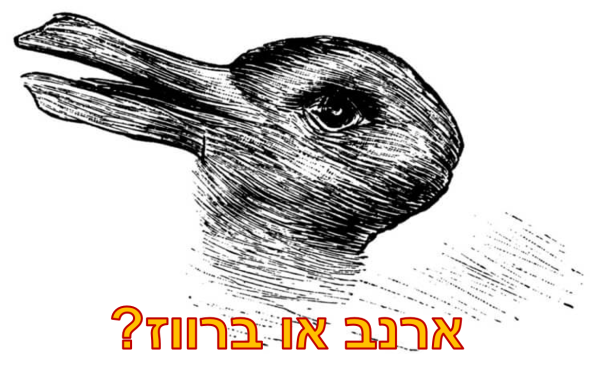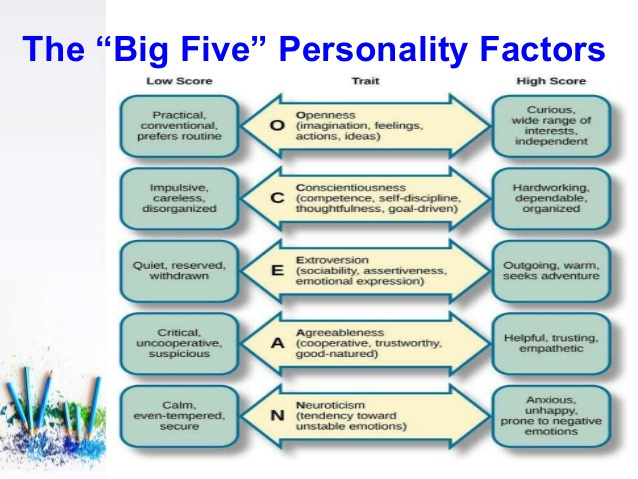The BIG5

Human curiosity about personality and what it says about us as humans is extensive, and live evidence for it can be seen on internet pages offering a variety of tests for examining personality, intelligence, and the brain. Personality theories have tried for years to understand how many personality traits a person has, led by Gordon Allport, an American psychologist specializing in personality, who researched and reached 4,000 personality traits that a person can have. Goldberg, L. R. (1993)
In the early 90s, many claims were heard against the use of personality tests during employee screening and recruitment, arguing that these tests had low validity, but in recent years there has been cautious optimism and a change in the way of thinking. It is argued that organizing traits within a framework and using traits as predictors has led to more stable connections between personality traits and productivity at work. A popular personality model today is the Big 5 model, which divides personality traits into five core traits. The Big 5 model is found to be cross-cultural and stable over time Barrick, M. R., & Mount, M. K.(1991).
There were and still are some disagreements in the world of psychology about the number of "labels" and the name of each column used by the Big 5 model, but interest in personality models is rising, especially
inmodels as predictors of the employment world. The model consists of five core traits - agreeableness, extraversion, openness to experience, conscientiousness (or directedness), and emotional stability. Each core trait consists of a bi-polar spectrum, receiving a score based on the individual expression of that trait.
For example - the trait "emotional stability", is a spectrum that ranges, at its low score, from balance, calmness and confidence, to its high score displaying traits of anxiety, instability and tendency to stress. That is, a person with a low score will be calm and stable, whereas a person with a high score will often experience feelings of depression, fear, instability and physical symptoms, and some say will also experience negative life events more severely Judge, T. A., Higgins, C. A., Thoresen, C.J., & Barrick, M. R. (1999).

When looking at the model in the context of the job market, John Hollenback's research (2002) found a connection between each of the core traits and valued traits at work. The problem is that these effects are related to additional factors and are not "clean" from a scientific perspective. For example - a connection was found between the core trait "conscientiousness" and teamwork, but it depends on the way the team is managed. In addition, a connection was found between extraversion and helping behavior, but in practice, the subject's response to a request for help was measured. Morgeson, F. P., Campion, M. A., Dipboye,R. L., Hollenbeck, J. R., Murphy, K., & Schmitt, N. (2007).
Despite the limited context, the implication of this prediction and scoring ability on the employment world has a significant effect. The meaning is that when there is no match between certain traits of an employee and the traits required by the job, the work will not be done in the best way. Does this mean that we need to think about matching personality traits between an employee and their job? Of course, but we return to personality tests, what is the method of testing?
The problem with administering personality tests (even those based on the Big 5)
is that there is an operational risk to using personality tests. From both sides of the fence. From the side of the employee taking the test, there is the ability to figure out the purpose of the test and change their answers accordingly and essentially "fake" personality traits. The ability to fake will increase as the desire to get the job increases. On the other hand, there are people who tend to fake more from a personality perspective. From the other side, from the perspective of the person administering the test, there is the question of subjectivity, and even when there are objective standards for testing, sometimes, personal judgment finds its way into the subject's answers. From here, arises the need for an objective measure that can show the traits and skills of employees.
In one of the first scenes in the movie "Alice in Wonderland", we see Alice sitting on the tree while her sister sits next to her and reads to her from some history book. Alice is having fun while her sister tries to get her attention. Alice wonders about the fact that she is supposed to be interested in a book without pictures. Apparently Alice would receive a high score in openness - she is curious, independent, and interested in many areas, especially in the world of imagination. She would also receive a high score in extraversion because she shows a tendency to go out and seek adventures and she radiates a warm feeling.
Tell us what Big 5 score you would give to beloved characters and whether you would take them to work for you.
Further reading:
Hurtz, G. M., & Donovan, J. J.(2000). Personality and job performance: The Big Five revisited. Journalof applied psychology, 85(6), 869.
Barrick, M. R., & Mount, M. K.(1991). The big five personality dimensions and job performance: a meta‐analysis. Personnelpsychology, 44(1), 1-26.
Goldberg, L. R. (1993). Thestructure of phenotypic personality traits. American psychologist, 48(1),26.
Judge, T. A., Higgins, C. A.,Thoresen, C. J., & Barrick, M. R. (1999). The big five personality traits,general mental ability, and career success across the life span. Personnelpsychology, 52(3), 621-652.
Morgeson, F. P., Campion, M. A.,Dipboye, R. L., Hollenbeck, J. R., Murphy, K., & Schmitt, N. (2007).Reconsidering the use of personality tests in personnel selectioncontexts. Personnel psychology, 60(3), 683-729.

Daniel is a graduate with a degree in Communication and Political Science from Bar-Ilan University, and is currently studying for a master's degree in Psychology at Ruppin Academic Center. Daniel writes professional articles related to the system.
We would be happy to hear your opinion!
LogiPass has dozens of additional articles dealing with issues of screening tests, career guidance and other interesting issues from the world of work.